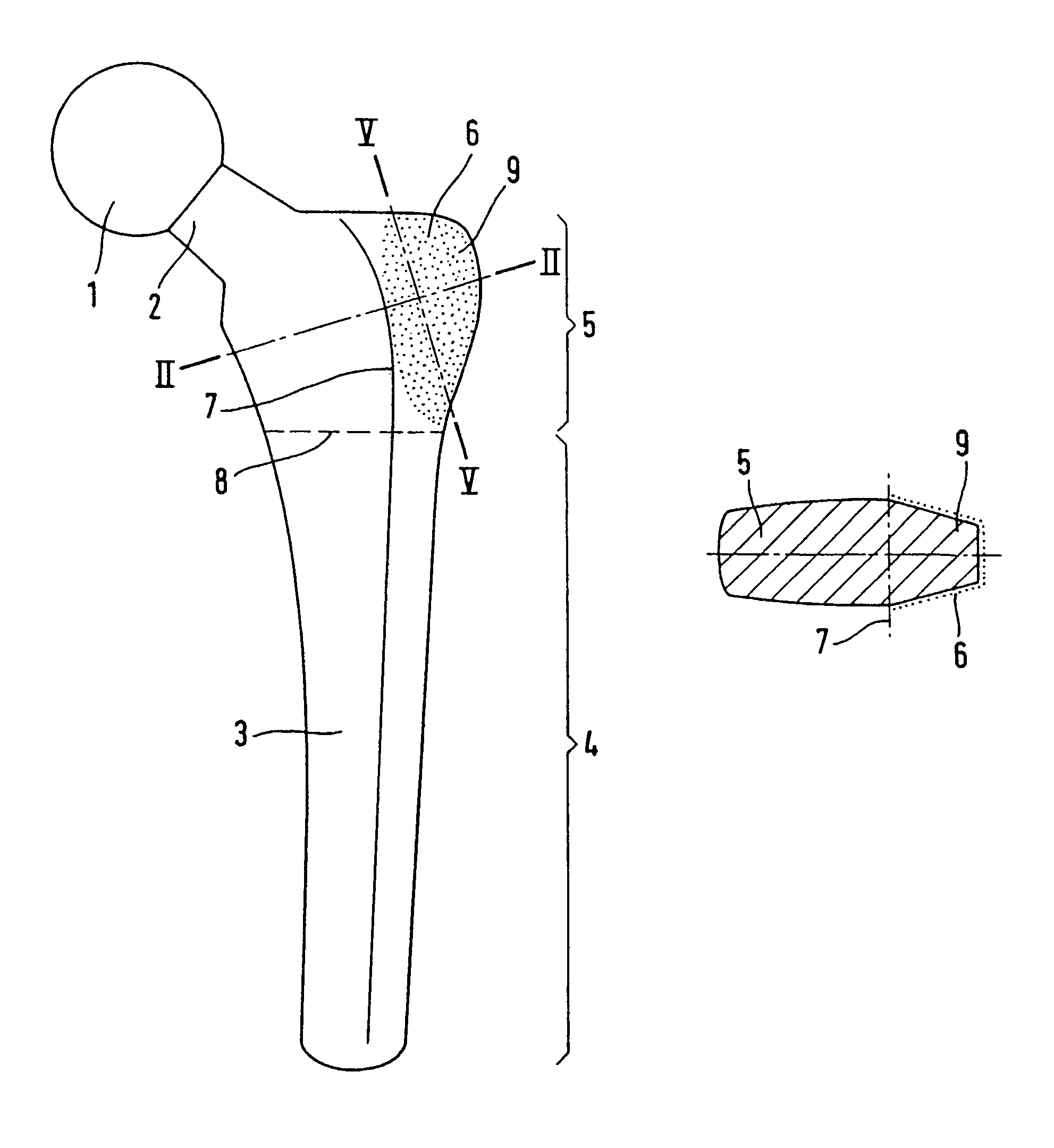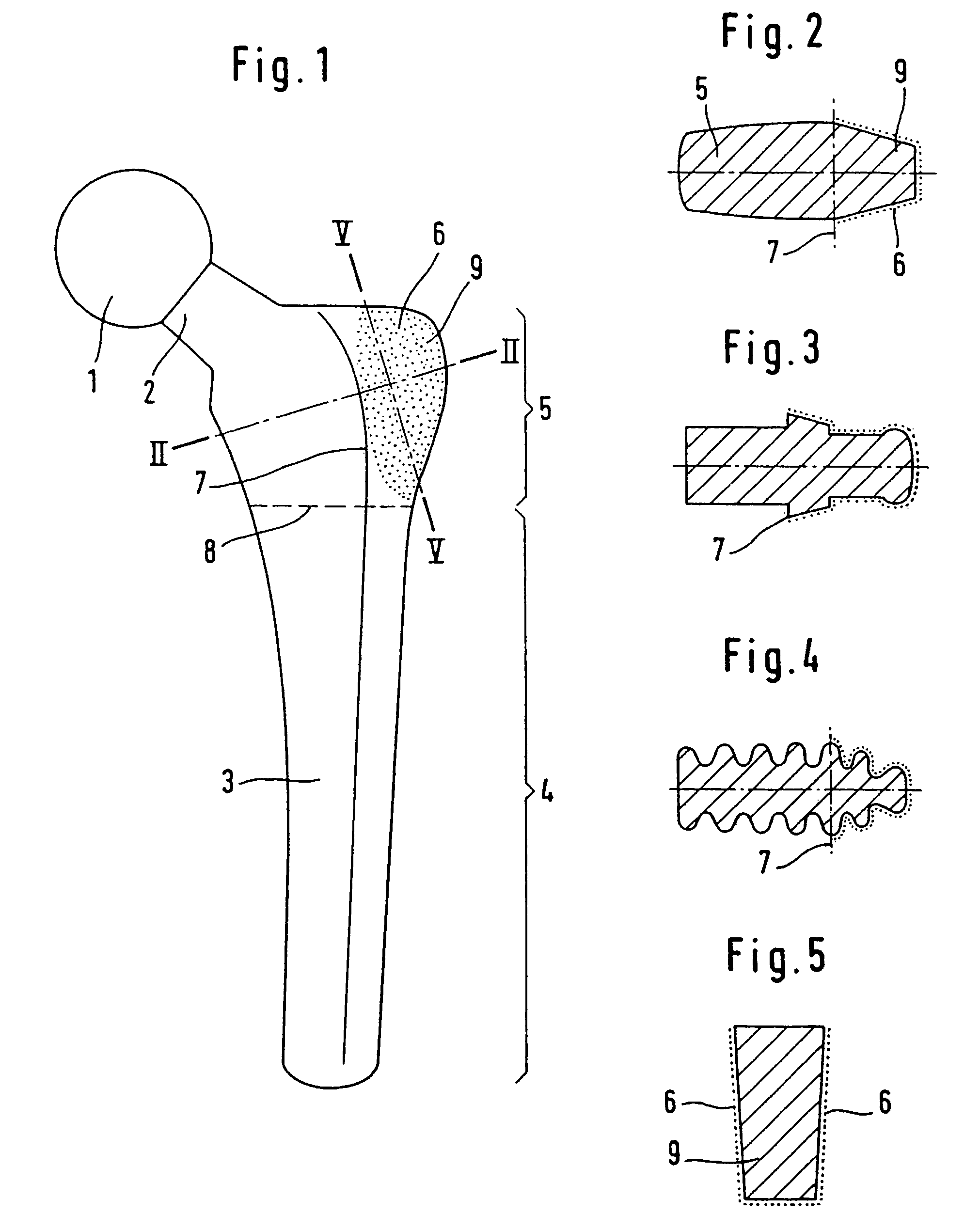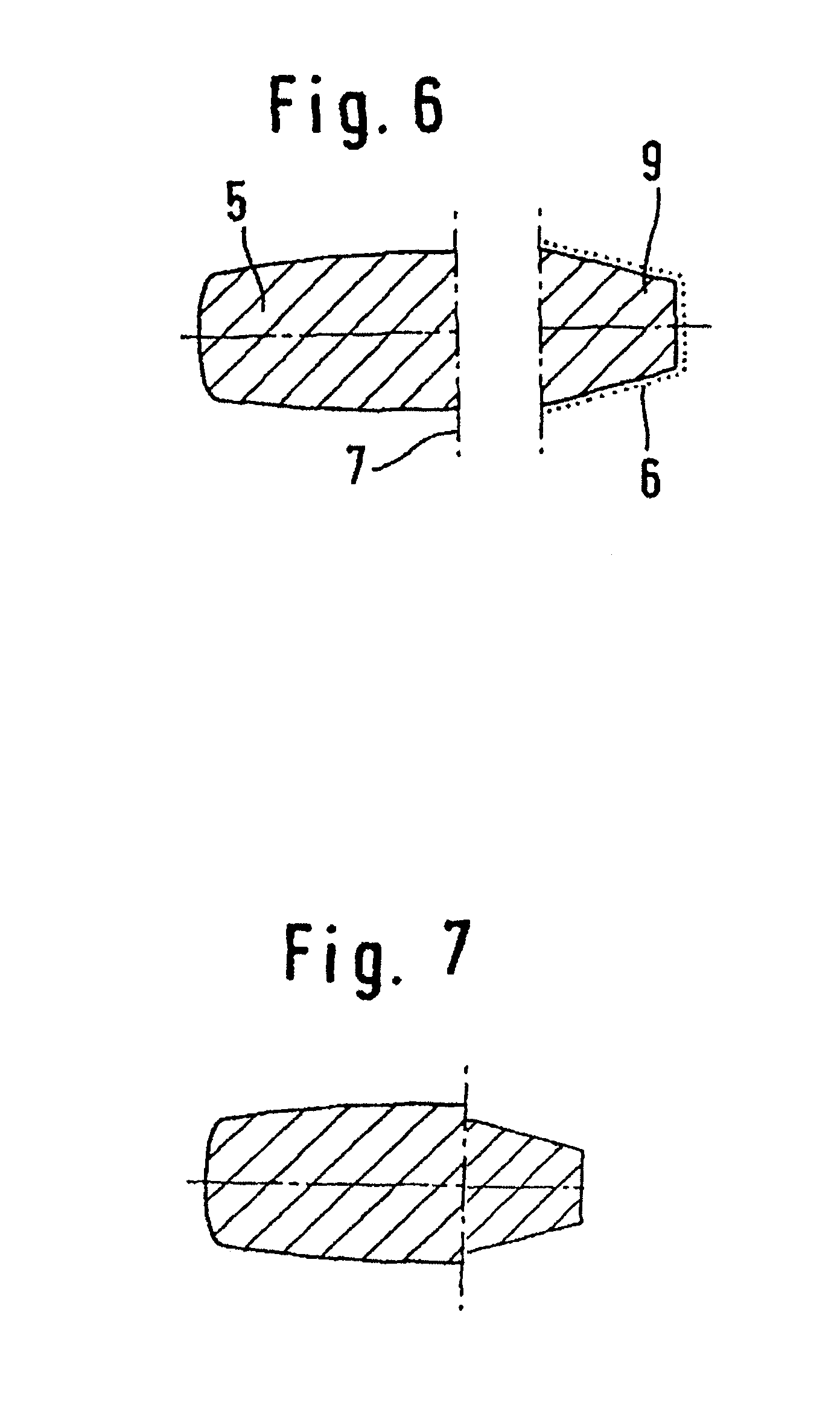Hip joint prosthesis with a shaft to be inserted into the femur
a technology of hip joint and prosthesis, which is applied in the direction of prosthesis, femoral head, joint implants, etc., to achieve the effect of rapid bone incorporation and rapid accumulation of bon
- Summary
- Abstract
- Description
- Claims
- Application Information
AI Technical Summary
Benefits of technology
Problems solved by technology
Method used
Image
Examples
Embodiment Construction
[0020]The hip prosthesis according to FIG. 1 comprises a joint head 1, and a neck 2 which has a shaft 3. The latter has a diaphyseal portion 4 to be anchored in the diaphysis of the bone, and a metaphyseal portion 5 to be anchored in the metaphysis of the bone. The diaphyseal portion is dimensioned such that it ensures primary anchoring of the shaft in the diaphysis of the femur. The person skilled in the art will see, from looking at FIG. 1, how the prosthesis will lie in the bone, and he or she will therefore also know where the border 8 between the diaphyseal and metaphyseal portions of the prosthesis lies.
[0021]Whereas the diaphyseal portion 4 of the shaft can bear on the strong cortical bone of the diaphysis and effect primary anchoring there, the metaphyseal portion lies mainly in the spongy bone tissue of the metaphysis.
[0022]FIG. 2 shows a location 7 having the greatest dimension of the shaft 3 in the AP direction (antero-posterior). The connection of the locations of maximu...
PUM
| Property | Measurement | Unit |
|---|---|---|
| thickness | aaaaa | aaaaa |
| thickness | aaaaa | aaaaa |
| thickness | aaaaa | aaaaa |
Abstract
Description
Claims
Application Information
 Login to View More
Login to View More - R&D
- Intellectual Property
- Life Sciences
- Materials
- Tech Scout
- Unparalleled Data Quality
- Higher Quality Content
- 60% Fewer Hallucinations
Browse by: Latest US Patents, China's latest patents, Technical Efficacy Thesaurus, Application Domain, Technology Topic, Popular Technical Reports.
© 2025 PatSnap. All rights reserved.Legal|Privacy policy|Modern Slavery Act Transparency Statement|Sitemap|About US| Contact US: help@patsnap.com



